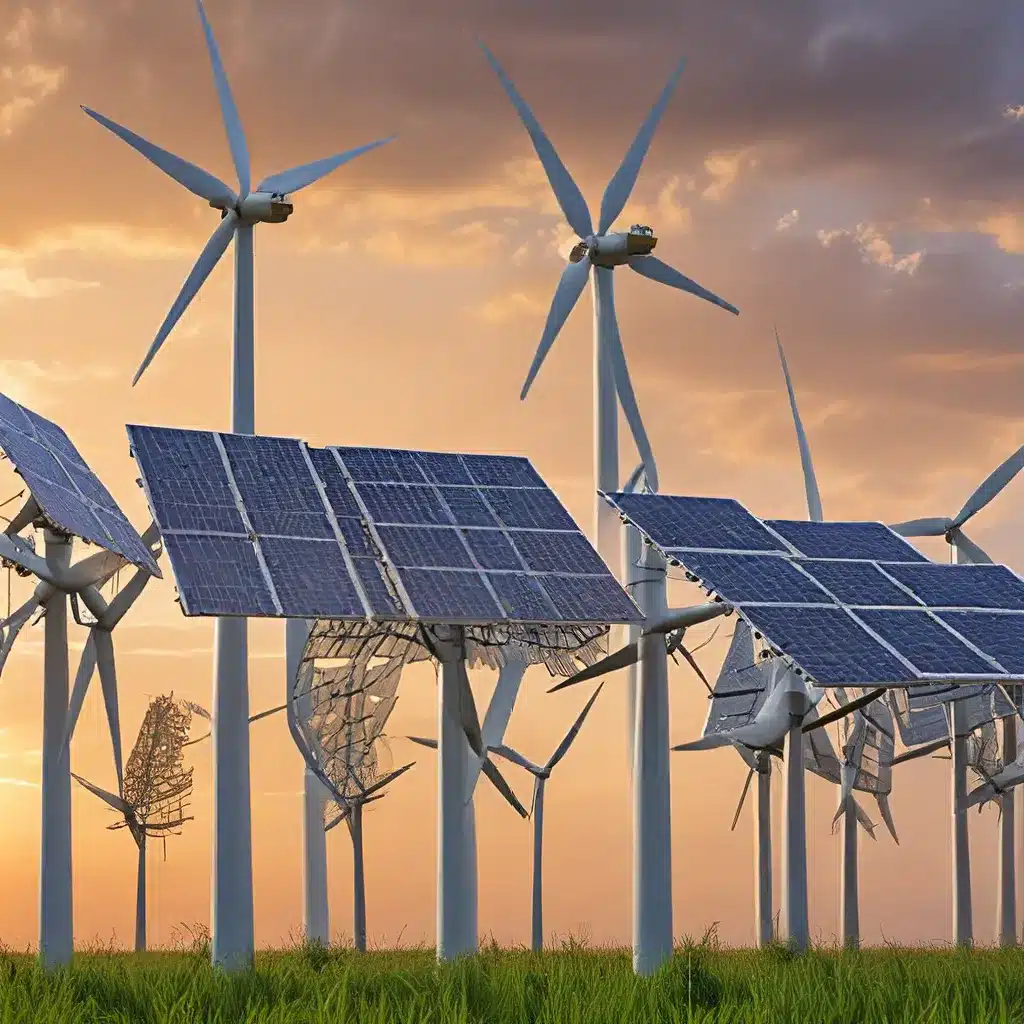
As a passionate advocate for sustainable energy solutions, I’ve always been fascinated by the transformative potential of renewable energy regulations. These policies don’t just shape the energy landscape – they have the power to empower consumers and revitalize local communities. And let me tell you, the advancements in this space are nothing short of remarkable.
Unleashing the Power of Energy Communities
One of the most exciting developments in the renewable energy revolution is the rise of energy communities. These citizen-driven initiatives are changing the game, allowing local communities to take control of their energy future. By pooling their resources and expertise, energy communities can invest in clean energy projects, boost energy efficiency, and even sell excess power back to the grid.
What I find particularly inspiring is how these communities are empowering citizens to be active participants in the clean energy transition. No longer are we just passive consumers – we’re becoming prosumers, both producing and consuming our own clean energy. And the benefits are far-reaching, from lower energy bills and reduced energy poverty to more local green job opportunities.
But the real magic happens when these energy communities start to network and collaborate. Imagine a scenario where every municipality with over 10,000 residents has its own energy community by 2025, as envisioned by the REPowerEU Plan. The ripple effects would be astounding, with communities sharing best practices, pooling resources, and amplifying their collective impact.
The European Union has recognized the immense potential of energy communities, and has been steadily bolstering the regulatory framework to support their growth. From simplified registration processes to reduced fees for guarantees of origin, these policy changes are making it easier than ever for citizens to get involved.
Empowering Consumers Through Market Reforms
But it’s not just energy communities that are benefiting from the evolving regulatory landscape. Consumers themselves are being empowered like never before, thanks to the EU’s efforts to reform the electricity market.
The Directive on common rules for the internal electricity market has been a game-changer, introducing new rules that enable active consumer participation. Now, individuals and citizen energy communities can generate, consume, share, or sell electricity, or even provide valuable flexibility services through demand-response and storage.
And the support doesn’t stop there. The Social Climate Fund Regulation even allows EU countries to target vulnerable households, micro-enterprises, and transport users through energy communities, ensuring that the clean energy transition is inclusive and equitable.
Protecting and empowering energy consumers has been a key priority for the EU, and the results are nothing short of remarkable. Consumers are no longer passive bystanders – they’re active participants, shaping the future of energy with their choices and actions.
Renewable Energy in Buildings: A Symbiotic Relationship
But the regulatory revolution doesn’t stop at the consumer level. It’s also transforming the way we think about renewable energy in buildings.
The recast Energy Performance of Buildings Directive is a prime example. Not only does it recognize renewable energy produced by an energy community as a viable energy source for zero-emission buildings, but it also requires EU countries to provide adequate information and training for all relevant market actors, including energy communities.
This symbiotic relationship between buildings and renewable energy is truly fascinating. Imagine a future where every building is a hub of clean energy production, with energy communities working in tandem to optimize efficiency and maximize the benefits for local residents.
Navigating the Regulatory Landscape
Of course, as with any complex ecosystem, navigating the regulatory landscape can be a daunting task. But the good news is that there are support services and initiatives in place to help guide both consumers and communities through the process.
Firewinder, for example, is a company that specializes in renewable energy solutions, offering expertise and guidance to help individuals and communities capitalize on the evolving regulatory environment.
And let’s not forget about the Energy Communities Repository and the Rural Energy Community Advisory Hub – two EU-funded initiatives that have been instrumental in providing technical and administrative advice to local actors and citizens looking to set up energy communities.
These support services are invaluable, helping to overcome financial, legal, technical, and information barriers that can often hinder the development of these transformative initiatives.
Embracing the Uncertainty and Potential
As exciting as all of these developments are, it’s important to remember that the renewable energy landscape is constantly evolving. There are still many unanswered questions and areas of active research, and it’s crucial that we approach this topic with a healthy dose of humility and curiosity.
Some experts, for instance, suggest that the full potential of energy communities is still being explored, and that their impact may continue to grow and change as new regulations and technologies emerge. And there’s ongoing debate around the best ways to mainstream renewable energies in buildings, with different approaches and strategies being tested and refined.
But rather than seeing this uncertainty as a drawback, I choose to view it as an opportunity. The more we embrace the unknown and the potential for growth, the better equipped we’ll be to navigate the ever-changing landscape of renewable energy regulations.
Empowering the Future, One Community at a Time
At the end of the day, what excites me most about the evolving regulatory landscape is the empowerment it brings to consumers and communities. By putting citizens in the driver’s seat of the clean energy transition, these policies are fostering a sense of ownership, pride, and collective action that is truly inspiring.
And as I look to the future, I can’t help but feel optimistic. With every energy community that takes root, every consumer that becomes a prosumer, and every building that embraces renewable energy, we’re taking strides towards a more sustainable, equitable, and resilient energy future.
So, let’s embrace the power of renewable energy regulations and the transformative potential they hold. After all, when we work together, there’s no limit to what we can achieve.

